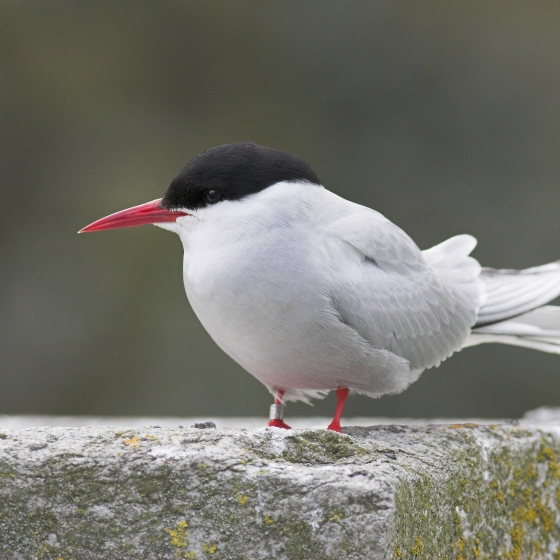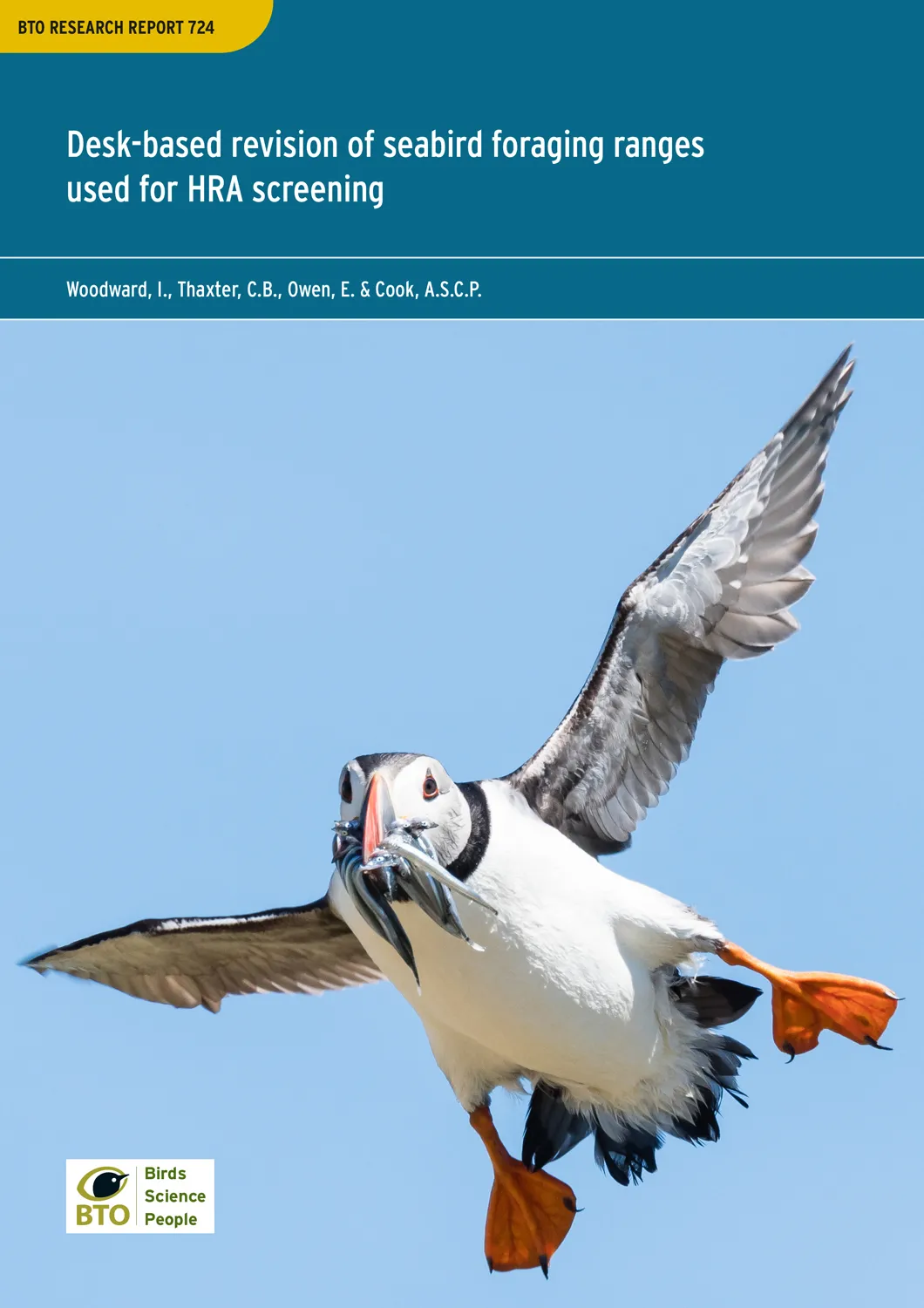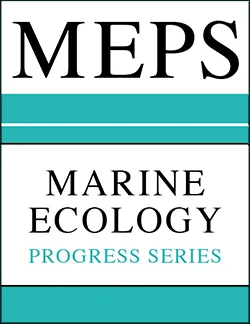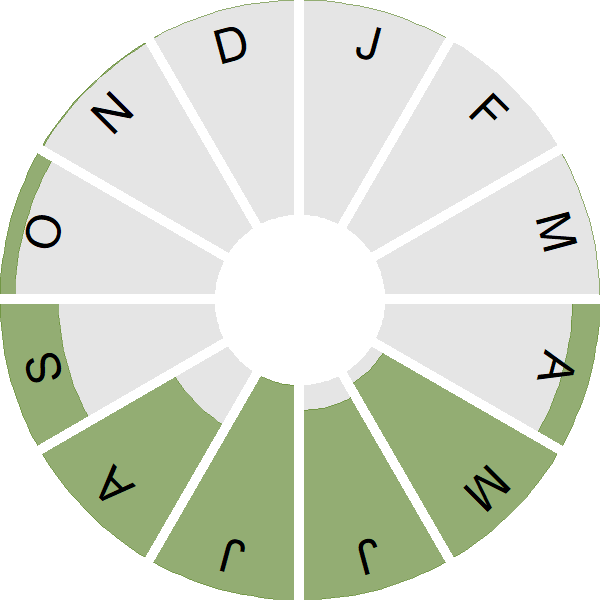Arctic Tern

Introduction
Arctic Terns are more oceanic than most terns, and have the longest migrations of any. Though very similar to Common Tern, Arctic Tern is noticeably more graceful in flight.
Breeding at high latitudes in the Arctic and then travelling south in time for another summer in the Antarctic, some Arctic Terns experience more daylight than any other species. Feeding and nest defence, and a potential lifespan of three decades, add greatly to their extraordinary air miles. In the far south they patrol the edge of pack ice, often resting on ice floes, and also feed in the open ocean, sometimes around Antarctic Minke Whales.
Breeding in Britain is exclusively coastal and mainly in the north, with the highest numbers in the Western Isles, Orkney and Shetland. Migration is mainly offshore or coastal, though hundreds cross Britain from the Atlantic to the North Sea each spring and may pause at lakes and reservoirs.

Key Stats
Identification
ID Videos
This section features BTO training videos headlining this species, or featuring it as a potential confusion species.
Tern Identification Workshop Part 1: Common and Arctic Tern
Songs and Calls
Call:
Alarm call:
Flight call:
Young call:
Status and Trends
Conservation Status
Population Change
Census data suggest that Arctic Tern numbers increased by 50% between 1969–70 and 1985–88, but then declined by 31% by the time of the Seabird 2000 Census (1998–2002). However, there is some uncertainty around the initial estimate and hence the reliability of the apparent initial populaion increases. Results from the more recent Seabirds Count (2015–2021) are not yet available but annual monitoring data suggest that the population has remained relatively stable since Seabird 2000, although further declines may have occurred in Scotland (JNCC 2022).
Distribution
Arctic Terns breed predominantly in coastal areas of Scotland and Ireland, with major colonies found in Shetland and Orkney. In Wales they are restricted to the islands off Anglesey, and there is a small colony on the Isle of Man. Breeding colonies in Ireland are located in five main clusters.
Occupied 10-km squares in UK
2007/08–10/11
or view it on Bird Atlas Mapstore.
2008–11
or view it on Bird Atlas Mapstore.
European Distribution Map
Distribution Change
Arctic Tern breeding range has contracted by 31% since the 1968–72 Breeding Atlas. Losses are greatest in western Scotland, where predation by American Mink has been implicated, and in eastern Scotland, where food shortages have resulted in very low breeding productivity.
Change in occupied 10-km squares in the UK
from 1981–84 to 2007–11
or view it on Bird Atlas Mapstore.
from 1968–72 to 2008–11
or view it on Bird Atlas Mapstore.
Seasonality
Arctic Tern is a summer breeding species, arriving from April/May onwards and sometimes lingering into late autumn.
Weekly pattern of occurrence
The graph shows when the species is present in the UK, with taller bars indicating a higher likelihood of encountering the species in appropriate regions and habitats.

Movement
Britain & Ireland movement
Foreign locations of birds ringed or recovered in Britain & Ireland
Dots show the foreign destinations of birds ringed in Britain & Ireland, and the origins of birds ringed overseas that were subsequently recaptured, resighted or found dead in Britain & Ireland. Dot colours indicate the time of year that the species was present at the location.
- Winter (Nov-Feb)
- Spring (Mar-Apr)
- Summer (May-Jul)
- Autumn (Aug-Oct)

European movements
EuroBirdPortal uses birdwatcher's records, such as those logged in BirdTrack to map the flows of birds as they arrive and depart Europe. See maps for this species here.
The Eurasian-African Migration Atlas shows movements of individual birds ringed or recovered in Europe. See maps for this species here.
Biology
Productivity and Nesting
Nesting timing
Egg measurements
Clutch Size
Survival and Longevity
Survival is shown as the proportion of birds surviving from one year to the next and is derived from bird ringing data. It can also be used to estimate how long birds typically live.
View number ringed each year in the Online Ringing Report.
Lifespan
Survival of adults
Biometrics
Wing length and body weights are from live birds (source).
Wing length
Body weight
Ring Size
Classification, names and codes
Classification and Codes
- Order: Charadriiformes
- Family: Laridae
- Scientific name: Sterna paradisaea
- Authority: Pontoppidan, 1763
- BTO 2-letter code: AE
- BTO 5-letter code: ARCTE
- Euring code number: 6160
Alternate species names
- Catalan: xatrac àrtic
- Czech: rybák dlouhoocasý
- Danish: Havterne
- Dutch: Noordse Stern
- Estonian: randtiir
- Finnish: lapintiira
- French: Sterne arctique
- Gaelic: Steàrnag-Artaigeach
- German: Küstenseeschwalbe
- Hungarian: sarki csér
- Icelandic: Kría
- Irish: Geabhróg Artach
- Italian: Sterna codalunga
- Latvian: juras zirinš
- Lithuanian: poliarine žuvedra
- Norwegian: Rødnebbterne
- Polish: rybitwa popielata
- Portuguese: trinta-réis-ártico / gaivina-do-árctico
- Slovak: rybár dlhochvostý
- Slovenian: polarna cigra
- Spanish: Charrán ártico
- Swedish: silvertärna
- Welsh: Môr-wennol y Gogledd
- English folkname(s): Sea Swallow, Darr, Tirrick
Research
Causes of Change and Solutions
Causes of change
There is good evidence that the declines in the Arctic Tern population between 1988 and 2004 are likely to have been driven, at least partly, by low breeding productivity which was related to changes in sandeel populations (Ewins 1985, Monaghan et al. 1989, Suddaby & Ratcliffe 1997). Climate change is believed to have played a role by driving the warming of UK waters thus affecting sandeel abundance (Wright & Bailey 1993).
Publications (5)
Desk-based revision of seabird foraging ranges used for HRA screening
Author:
Published: 2019
A key step in understanding the possible impacts of a proposed windfarm development is to identify potential interactions between seabird breeding colonies and the proposed development areas. Such interactions are typically assessed using generic information on foraging ranges, derived from academic studies. This report uses the latest data to provide updated estimates of foraging range, which will help to ensure that the best available information is available when new developments are being considered.
01.12.19
BTO Research Reports

The status of the UK’s breeding seabirds
Author:
Published: 2024
Five seabird species are added to the Birds of Conservation Concern Red List in this addendum to the 2021 update, bringing the total number of Red-listed seabird species to 10, up from six since seabirds were last assessed. The Amber List of seabirds moves from 19 to 14 species, and the Green List increases from one to two species.
29.09.24
Papers

Seabird Population Trends and Causes of Change: 1986–2023
Author:
Published: 2024
This report presents the latest seabird population trends in breeding abundance and productivity using data from the Seabird Monitoring Programme (SMP).The report documents changes in the abundance and productivity of breeding seabird species in Britain and Ireland from 1986 to 2023, and provides a detailed account of the 2021, 2022 and 2023 breeding seasons. This report includes both inland and coastal populations and trends from the Channel Islands, England, Isle of Man, Northern Ireland, Scotland, Wales and the Republic of Ireland, which are presented where sufficient data are available. The results from this report are used more broadly to assess the health of the wider environment, to inform policy and for conservation action.
21.11.24
Reports SMP Report

Seabird abundances projected to decline in response to climate change in Britain and Ireland
Author:
Published: 2023
Britain and Ireland support globally-important numbers of breeding seabirds, but these populations are under pressure from a suite of threats, including marine pollution, habitat loss, overfishing and highly pathogenic avian influenza. Climate change introduces additional threats, the magnitude of which is uncertain in the future, making it difficult to plan how to apportion conservation efforts between seabird species. Predicting how species’ numbers could change under different climate change scenarios helps clarify their future vulnerability to extinction, and thus assists in conservation planning.
05.12.23
Papers

Birds of Conservation Concern Wales 4: the population status of birds in Wales
Author:
Published: 2022
The latest review of the conservation status of birds in Wales. The report assessed all 220 bird species which regularly occur in Wales. There are now 60 species of bird on the Red List, with 91 on the Amber List and just 69 - less than a third of the total number of species - on the Green List. The latest review of the conservation status of birds in Wales comes 20 years after the first, when the Red List was less than half the length it is today. The report assessed all 220 bird species which regularly occur in Wales. There are now 60 species of bird on the Red List in Wales, with 91 on the Amber List and 69 on the Green List. The Birds of Conservation Concern in Wales report assesses the status of each species against a set of objective criteria. Data sources include the BTO/JNCC/RSPB Breeding Bird Survey and the BTO/RSPB/JNCC Wetland Bird Survey, as well as Bird Atlases and other BTO-led monitoring schemes and citizen science initiatives. These are used to quantify the changing status of the species’ Welsh population. The UK, European and global conservation status of the species is also considered, placing the Welsh population into a wider context. The Red ListSwift, Greenfinch and Rook – familiar breeding species in steep decline across the UK – are among the new additions to the Welsh Red List, which now also includes Purple Sandpiper, on account of a rapidly shrinking Welsh wintering population, and Leach’s Petrel, an enigmatic seabird in decline across its global range. These species now sit alongside well-known conservation priorities, such as Curlew, Hen Harrier and Turtle Dove as birds at risk of being lost from Wales for good. Uplands and woodlands Many of the species on the Red List are found in upland and farmland habitats. Starling, Tree Sparrow, Yellow Wagtail and Yellowhammer can no longer be found in much of Wales, while iconic species of mountain and moorland, such as Ring Ouzel, Merlin and Black Grouse, remain in serious trouble. Wales is well known for its populations of woodland birds; however, many of these – including Lesser Spotted Woodpecker, Willow Warbler and Spotted Flycatcher – also feature on the Red List. Goldcrest, which has seen its Welsh population shrink alarmingly in recent decades, is another new addition. On the coast The assessment for Birds of Conservation Concern Wales 4 took place before the impacts of avian influenza could be taken into account. Breeding seabird species have been struggling in Wales for many years, however, and most were already of conservation concern before the outbreak of this disease. Kittiwake, Puffin, Black-headed Gull, and Common, Arctic and Sandwich Tern remain on the Red List. Wales holds internationally significant numbers of breeding seabirds, making the decline of these colonies a global concern. The Amber ListDeclines in Wheatear, Garden Warbler and House Martin - all migrants which breed in Europe and winter in sub-Saharan Africa - mean these species have moved from the Green List to the Amber List. Many other ‘Afro-Palearctic' migrant species are also in decline, but the potential reasons for this, such as habitat loss and reduced availability of invertebrate prey, are not well understood. Closer to home, the declines in the Welsh Chaffinch population, linked to the disease trichomonosis, have seen the species Amber-listed. A number of other species have been placed on the Amber List because of the wider importance of their Welsh populations, which in each case make up more than half the UK total. Wales is home to more than three-quarters of the UK’s Choughs, for example, so recent declines are cause for concern. The nation’s breeding populations of Manx Shearwater, Pied Flycatcher, Goshawk and Hawfinch also account for more than half the UK total, as does its wintering population of Spotted Redshank. It’s not all bad news, though: some species now on the Amber List have moved up from the Red List, indicating some positive change in their population trends. These include Common Sandpiper, Great Black-backed Gull, Bullfinch, Goldcrest and Pied Flycatcher. The Green ListWhile the report contains much cause for alarm, several conservation success stories shine through. Red Kite was almost lost as a British bird during the first half of the 20th century, when only a handful of pairs remained in remote Welsh valleys. Since then, a sustained conservation effort has brought the species back from the brink. Wales is now home to more than 2,500 pairs of Red Kite and the species has now been moved to the Green List, reflecting this incredible change in fortunes. Song Thrush, Reed Bunting, Long-tailed Tit, Redwing and Kingfisher are among the other species to have gone Green, providing much-needed hope that things can go up as well as down.
06.12.22
Reports Birds of Conservation Concern

More Evidence
More evidence from Conservation Evidence.com
Partners
Citing BirdFacts
If you wish to cite particular content in this page (e.g. a specific value) it is best to use the original sources as linked in the page. For a more general citation of the whole page please use: BTO (20XX) BirdFacts Species: profiles of birds occurring in the United Kingdom. BTO, Thetford (www.bto.org/birdfacts, accessed on xx/xx/xxxx).

